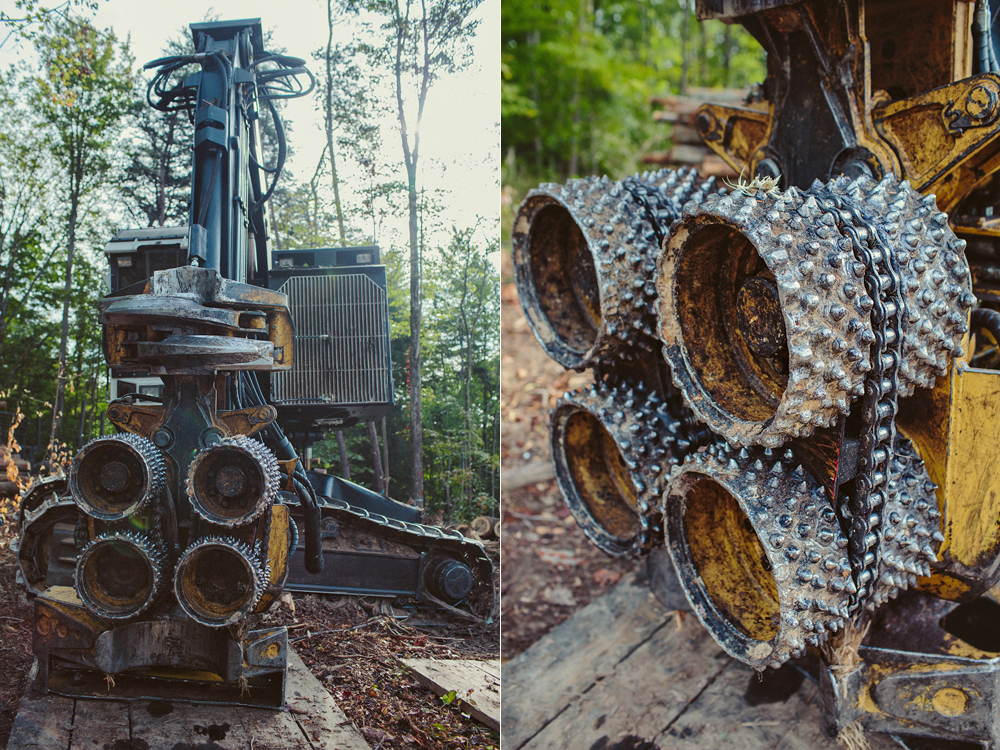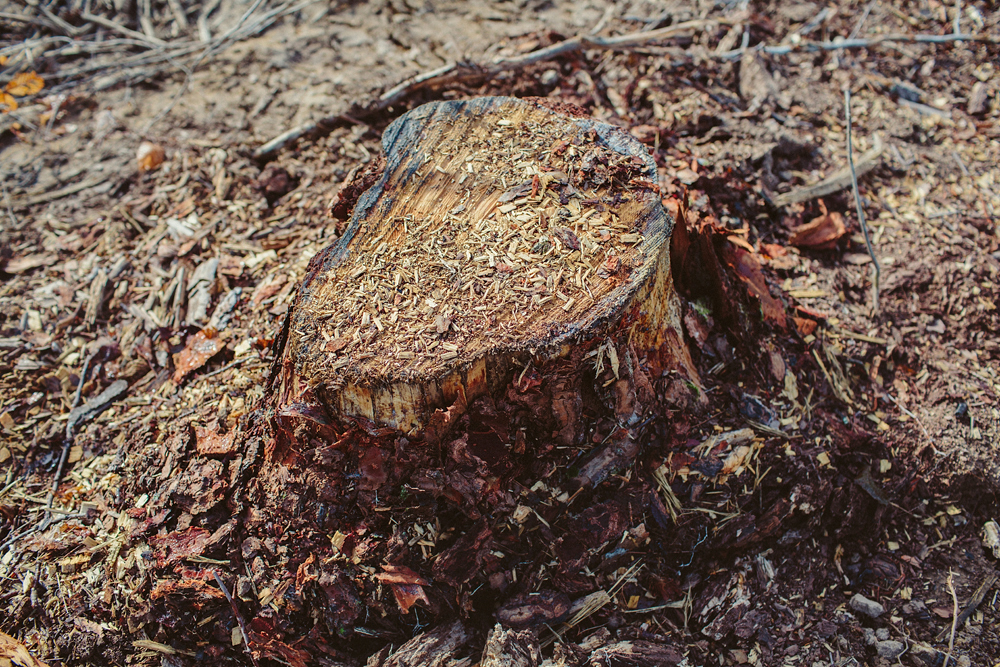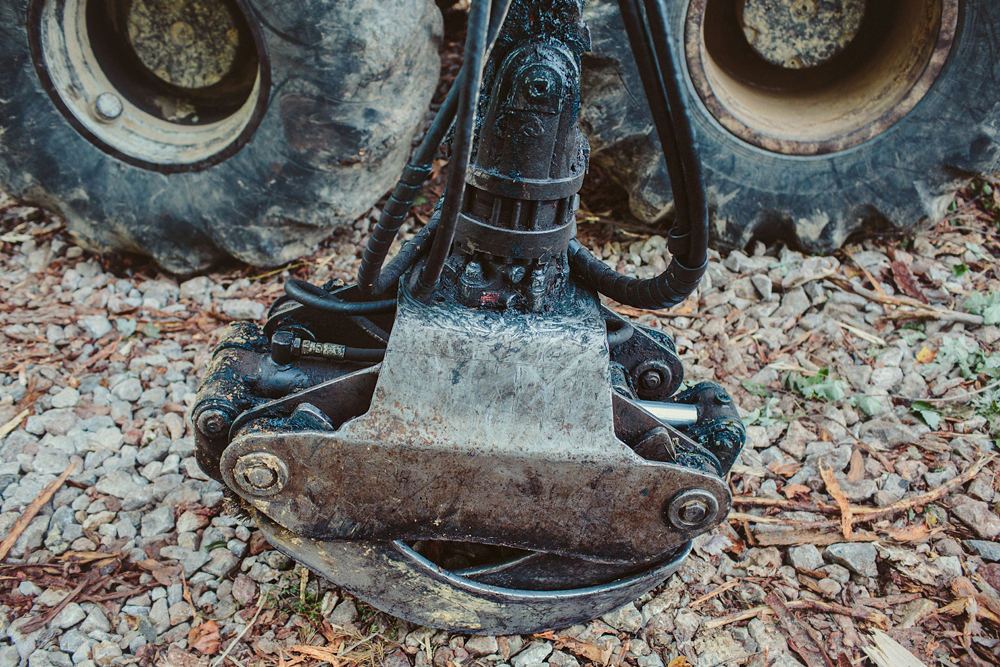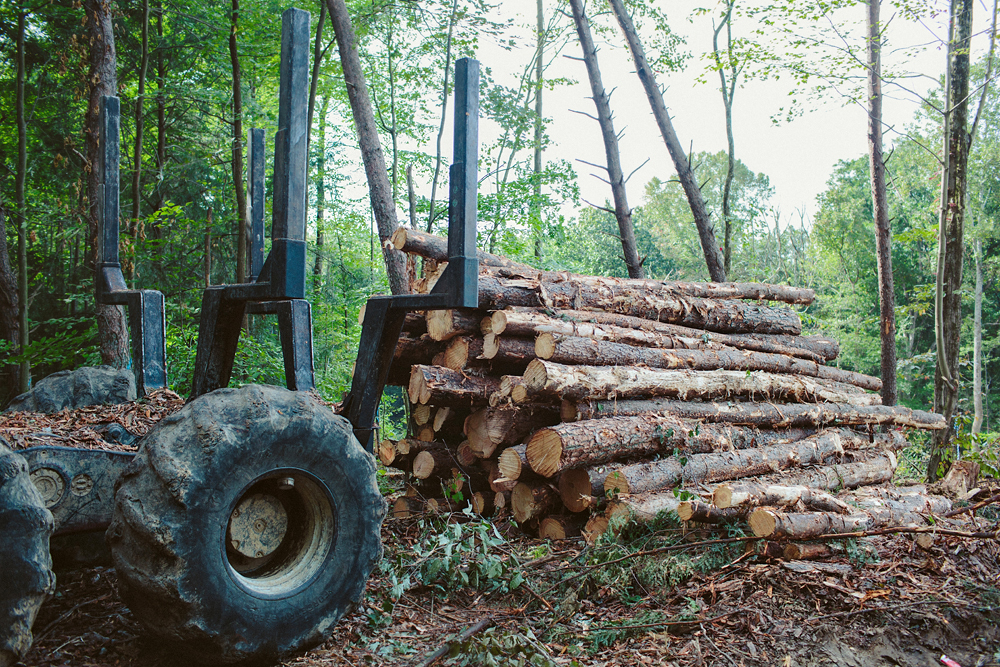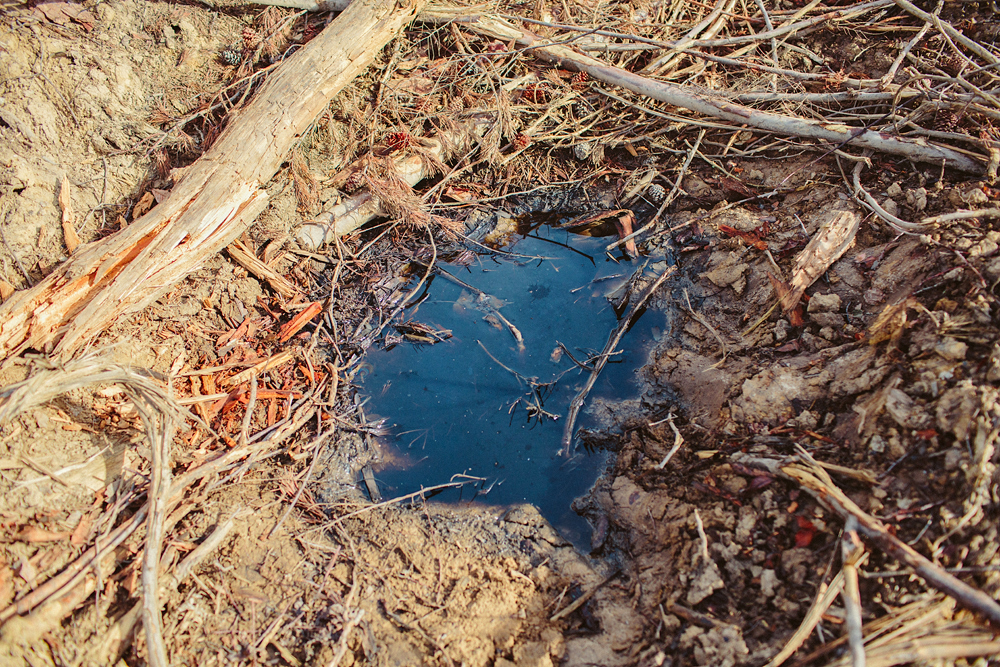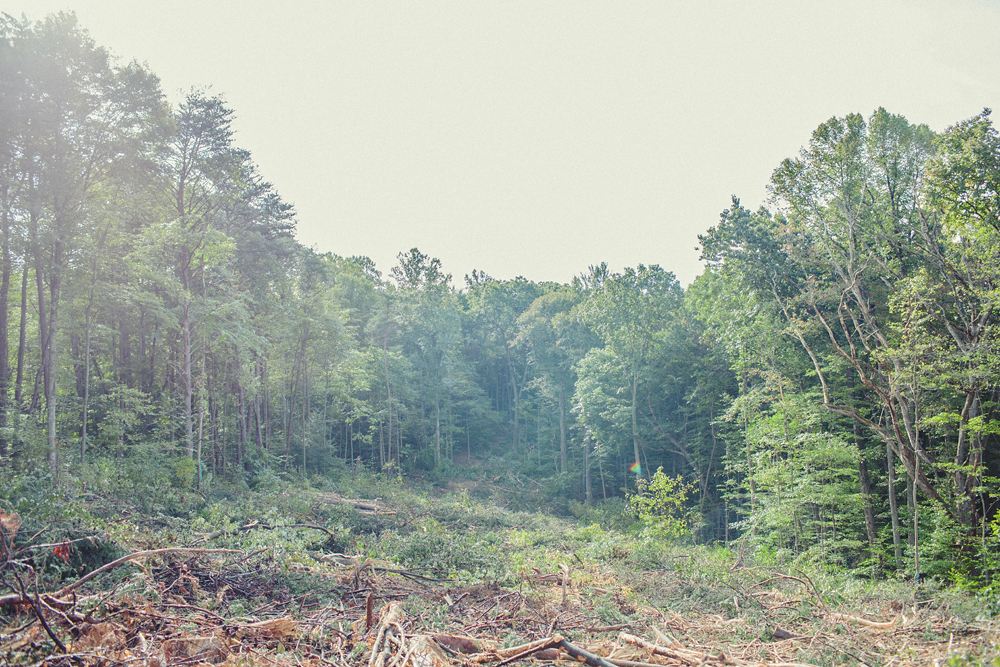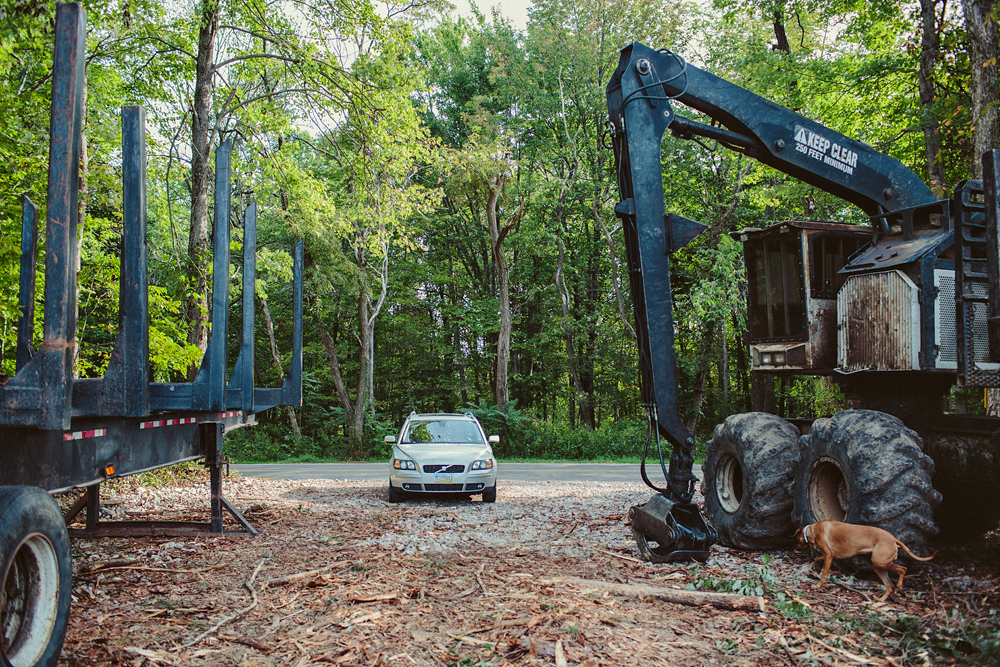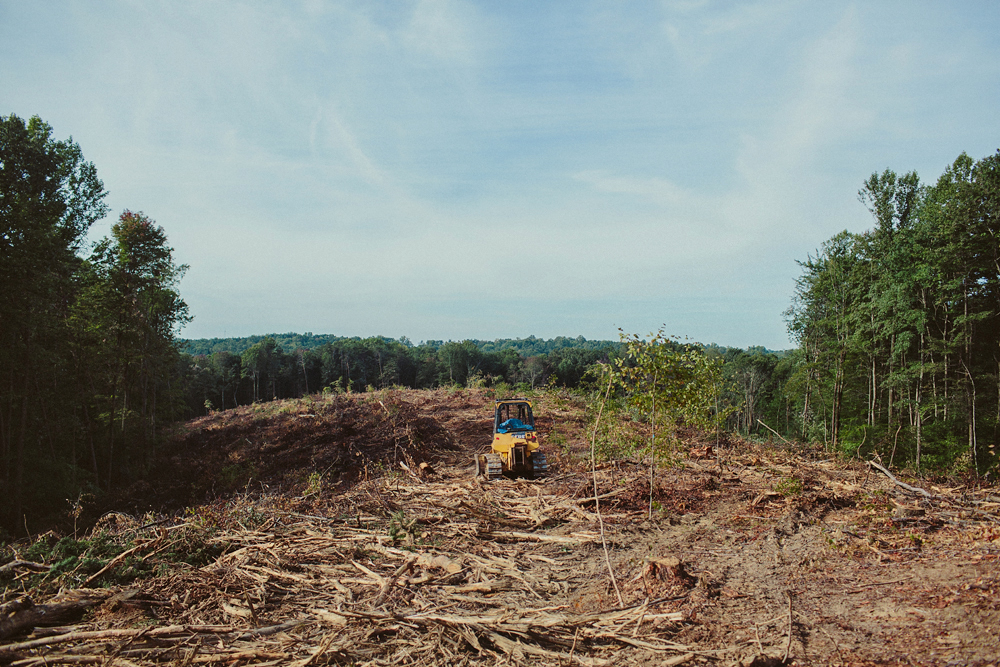Up the road from the family cabin muddy tracks are caking up on the asphalt this fall. These tire treads are wide, much wider than the average Hocking Co. pickup truck – which is a notable dimension to begin with. The mud flung from them dries in the late autumn sun like manure dropped in the lane from 21st century workhorses. If you were to follow these tracks, they lead you to a pull-off on the road onto state land where timber rights have been leased and the parcel of forest has been cruised, surveyed, and harvested.
We’ve had clear cuts of similar sizes in my life, and some even closer to the family land. What I have learned about these methods and acts has changed as I have grown. Forest management is far too big of topic for me speak on in any terms expect my personal experience. Even at this small and subjective level, I am as confounded now as I ever was. When very young, I’d sneak to the edge of the timber line in the forest while these machines worked. You can hear them long before you can see them. They sounded like monsters from the Jurassic; enormous and terrible, wonderful and deadly beasts crushing through the White Pine and Hemlock. Hydraulics moaning and exhaust roaring in their muscles and bellies. The tallest treetops – usually Tulip Poplar – would tremble and shed their leaves in fear. I remember the dizzying feeling I had when looking up and seeing the forest canopy start to move in an arc and fall to the side. I would loose my balance and lean the opposite way. Trees are supposed to stand tall and stay still. It was like the forest floor turned into a rocking boat in open water.
When a little older, and my world view was from a four to five foot tall teenage vantage point, and I learned to despise these machines for what they did and the men who operated them. It’s easier to teach a kid (or an adult) about ideas in terms of being uniquely good or bad. Trees were good and I saw no reason to cut them down if they were still alive. The men who operated the machines are portrayed in today’s marketing material very much like I remember them. Dwarfed on those machines, tiny and sneering, menacing and aggressive inside dirty glass cockpits. At dusk in the summer, I’d move like Natty Bumpo moved through the woods, I’d move silent among the trees when the work was done and the forest quiet again. I’d sneak onto the steel treads of the track harvesters and Knuckleboom loaders and try to set booby traps, with sticks and line, I’d devise plans to jam the voracious teeth and gear work. Remembering back, it was less like the Hawkeye in Last of the Mohicans, and more like David’s slingshot aimed at Goliath.
Every four or five years, another set of acreage in the surrounding hills has been brought to it’s barren stumps this way. And every four or five years, my reactions change as my understanding of this world and my place in it changes. When I walked out into the expanse early in that morning, I realized consumption and destruction are two words for same thing; to be accurate and honest in our language, each need to be spoken in the same breath. And when they are no longer intrinsically bound together in intellectual awareness, real consequences start to add up.
As the sun shined on that ground for the first time decades, perhaps generations, even ages, I realized consumption or destruction by either name do not offend me outright. What I realized is that it is the scale of consumption and destruction that triggers my judgement. There is honor, craft, and plenty (too much, I am guilty) romance and nostalgia in a solitary woodsman felling one tree at a time into a premeditated lay with his lone sharp axe, own brawn and keen bush sense. There is the same in a hunter or butcher cleaning and dressing his kill. Consumption and destruction can be beautiful when they remain equivalent and connected. They can be an art form when performed together with skilled hands and minds. With both the log or lamb, these tales are the same; in that both deeds are done for necessity of the Ends, not the speculate of the Means. They are done for shelter, fueling and feeding of those (and their immediate community) who perform them. ‘Know your part in the calf and the killing’ it’s been said. When those acts are scaled up, those who benefit from the ends are separate from those who enact the means, and each other’s experiences are not understood by the other, be it in a timber clear cut in Hocking County Ohio or a beef cattle feedlot in Greely Colorado, both are wrenching sites to behold first hand. Equal parts awe and terror, guilt and amazement. But in the scale comes the biggest consequence: in industrial systems, the hand that destroys is not the same hand which that consumes. Grocery aisles, lumber yards, most any marketplace I have ever encountered may well be a different place if these acts – or at least their carnal awareness, were not severed.
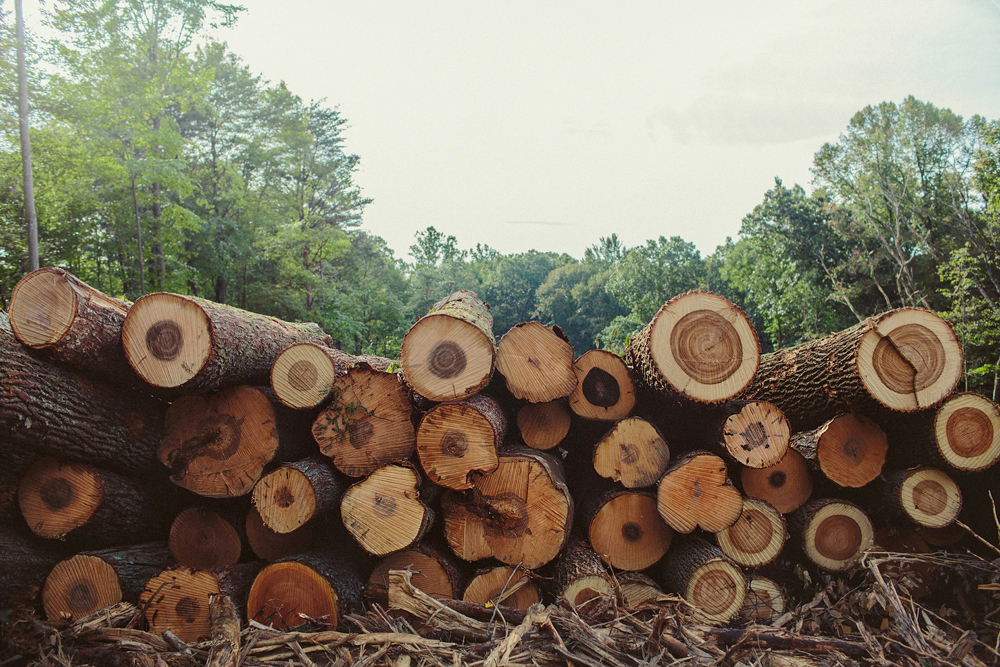
The public sign at the road to the clear cut reads Glatfelter. They are in the paper business. They make paper for books, business forms, envelopes, food and beverage packaging. The wood on that land was mostly softwood, and I have been told in the past that it usually goes to pulp, for things that I have since realize, are often for single, and startlingly quick uses.
The hilltop is gone. By the time it grows back, I may well be too old to walk again under the trees as they once were. I do not know the reforestation policies or management plan that will follow. I am sure there is one in some form or fashion. I’ll be watching with curiosity. In the meantime, I’ve found myself taking fewer paper napkins at lunch time. I leave the cardboard coffee sleeves alone and the straws and cup lids too. I feel uneasy when I see the recycling bins in our alley over-stuffed with cardboard boxes, like french fries falling out of a super-size french fry carton. It’s not a plausible reaction for me to abstain from such things. It’s also not a moral position or judgement. It is not guilt either. Using less of these items will in no way stop the trees from falling around our family cabin. And I won’t blame the library for cutting all the trees down and turning them into books. Was it better standing in the woods or bound in books on the shelf? It’s not logic that fits easily into today’s ways. Though I’d be interested in what Thoreau would have to say on this issue. I think I am doing these things out of appreciation. For an acknowledgement of the costs exacted for my remarkably easy life; to self-impose a paltry and fleeting denial of a fraction of the abundance of convenience in my life, so to in some way remind myself that I have severed the destruction from the consumption, and the monstrous machinery out in the woods has scaled to unbelievably effective and efficient levels to meet my demands. It will take fifty years of sunlight and rainwater raise those woods again. Dozens of times a day I reach for items that save me minutes, if not seconds to make my life easier. Those paper coffee cups are hot. Adding a cardboard sleeve is an easier solve than washing out coffee mug that has a proper handle for such situations. Paper towels save me the hassle of washing the hand-towel (in a washing machine that takes no effort for me to operate). These solutions are measured in seconds that save minutes and made possible by material that takes decades to be some where out on back county roads where few see them grow or be sawn down to their stumps by giant machines.
Related bibliography: 1) American Canopy: Trees, Forests, and the Making of a Nation By Eric Rutkow
2) The Golden Spruce: A True Story of Myth, Madness and Greed By John Vaillant
